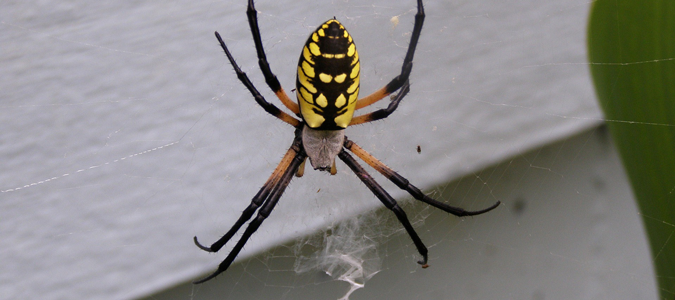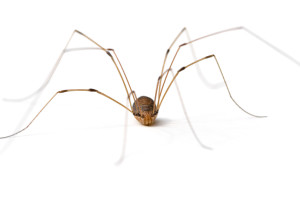 Spiders have a bad reputation in Texas. While many people are afraid of them, spiders aren’t the dangerous creepy crawlies people think they are. Most spiders are good guys, ensnaring and eating insects like flies, gnats, mosquitoes and other pests.
Spiders have a bad reputation in Texas. While many people are afraid of them, spiders aren’t the dangerous creepy crawlies people think they are. Most spiders are good guys, ensnaring and eating insects like flies, gnats, mosquitoes and other pests.
Facts about Spiders in Texas
Here are some interesting tidbits about spiders that might help you appreciate their contribution to our homes and gardens.
Most spiders in North America are harmless. In the Bryan-College Station area, we only need to worry about two spiders: the black widow spider and the brown recluse spider. With hundreds of harmless spiders out there, it’s worth learning how to identify these two venomous spiders so you can recognize friends from foes.
Spiders are our friends. Each spider inside your home can consume hundreds of mosquitoes, flies, and gnats. Outside in your garden, spiders often eat the bugs that cause damage to plants. You’ll find spiders that love aphids, grasshoppers, beetles and many other garden pests.
Spiders aren’t aggressive towards people and pets. It’s quite unusual for spiders to bite us. When they do bite, it’s usually in self-defense. To other spiders, though, it’s game on, as spiders are all predators by nature, killing insects and small animals for food. The long-legged cellar spider (a spider that is often mistaken for a brown recluse) preys on black widows.
Avoiding spider bites is easy with a little awareness and caution. Both brown recluse spiders and black widows like to hide in out-of-the-way places. Take extra care when disturbing outdoor wood piles, cinder blocks, BBQ pits, flower pots and other items where spiders may have been undisturbed long enough to make these places their homes. When indoors, shake out shoes and boots, and use caution when going through storage rooms and boxes. (These are also useful tips for avoiding scorpions, which tend to prefer the same kinds of hiding places as spiders).
Friendly Spiders of the Lone Star State
Below are just a few of the friendly spiders you might encounter in Texas, especially the Bryan-College Station area.
Grass Spiders:
These are very common outdoor spiders. They are brown with vertical stripes on their heads, and often spin webs low to the ground.
Jumping Spiders:
The outdoor spiders are usually brown or black and have a rather fierce appearance. Rather than spin webs, they like hiding in little crevices to hunt small insects.
Black and Gold Garden Spiders:
Arguably the most beautiful and interesting spider in our region, these boldly-marked spiders are found outdoors and are responsible for large webs with strong silk, frequently with a zigzag in the center. The females can grow quite large and can eat full-grown grasshoppers.
Crab Spiders:
Usually found in the garden, these varieties are known for very long front legs that give them a crab-like appearance.
Longbodied Cellar Spider:
This is our most common indoor spider. With an elongated abdomen and very long, thin legs, these are most likely the spiders you’ll find spinning webs on ceilings and in your basement.
Wolf Spider:
Although hairy and sometimes quite large, wolf spiders aren’t nearly as scary as their name suggests—unless you’re a cricket! These spiders chase and capture their prey, hence their name, but they won’t hurt people.
How you can keep spiders out of your house
 The best way to keep spiders out is to eliminate their food source: insects. By practicing safe insect control, you shouldn’t find many spiders. If you do find spiders inside, you can easily capture them by placing a cup or glass over them and then sliding a piece of paper or cardboard under the glass, and then release them outdoors.
The best way to keep spiders out is to eliminate their food source: insects. By practicing safe insect control, you shouldn’t find many spiders. If you do find spiders inside, you can easily capture them by placing a cup or glass over them and then sliding a piece of paper or cardboard under the glass, and then release them outdoors.
Are spiders taking over?
Even if you’re the biggest spider fan, you might not want to find them regularly inside your home. If you feel like your house has more than its fair share of these creatures, or if you’re finding brown recluses or other poisonous spiders (or scorpions!) in your home, it’s time to call out the professionals.